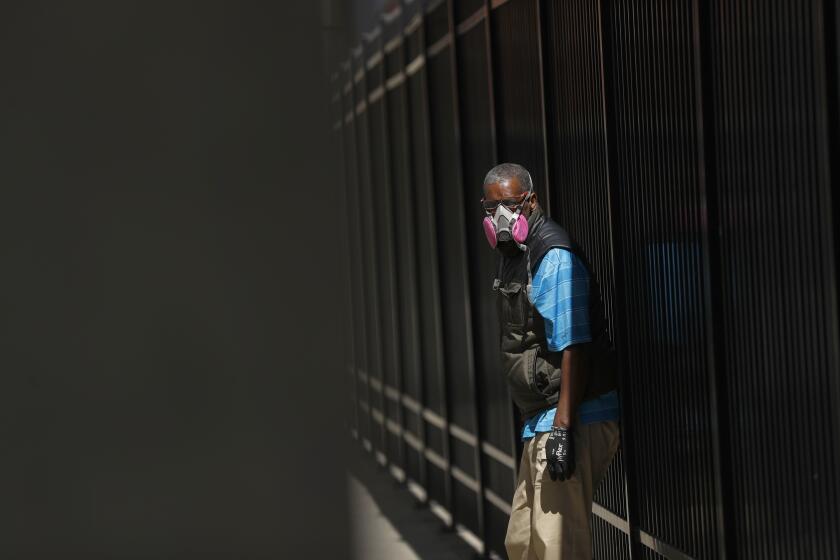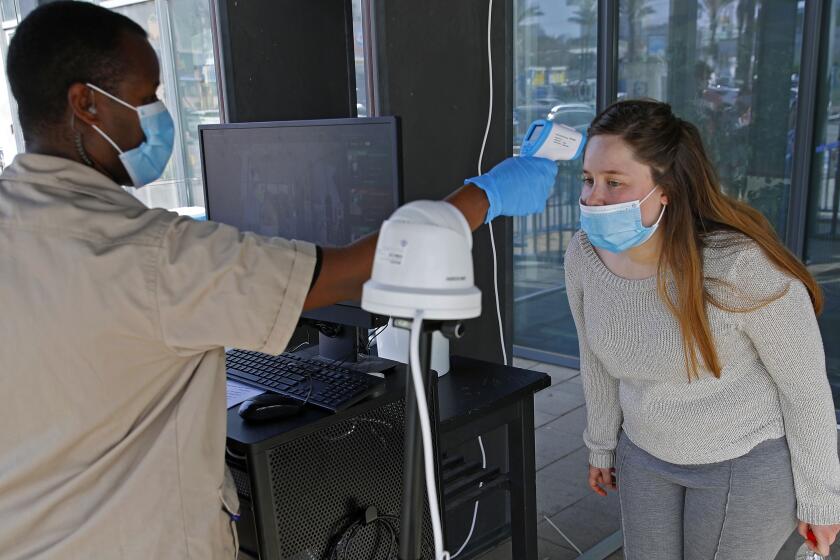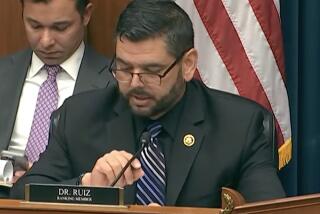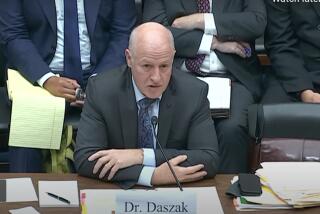With laboratories shut, coronavirus forces scientists to ‘stop cold’
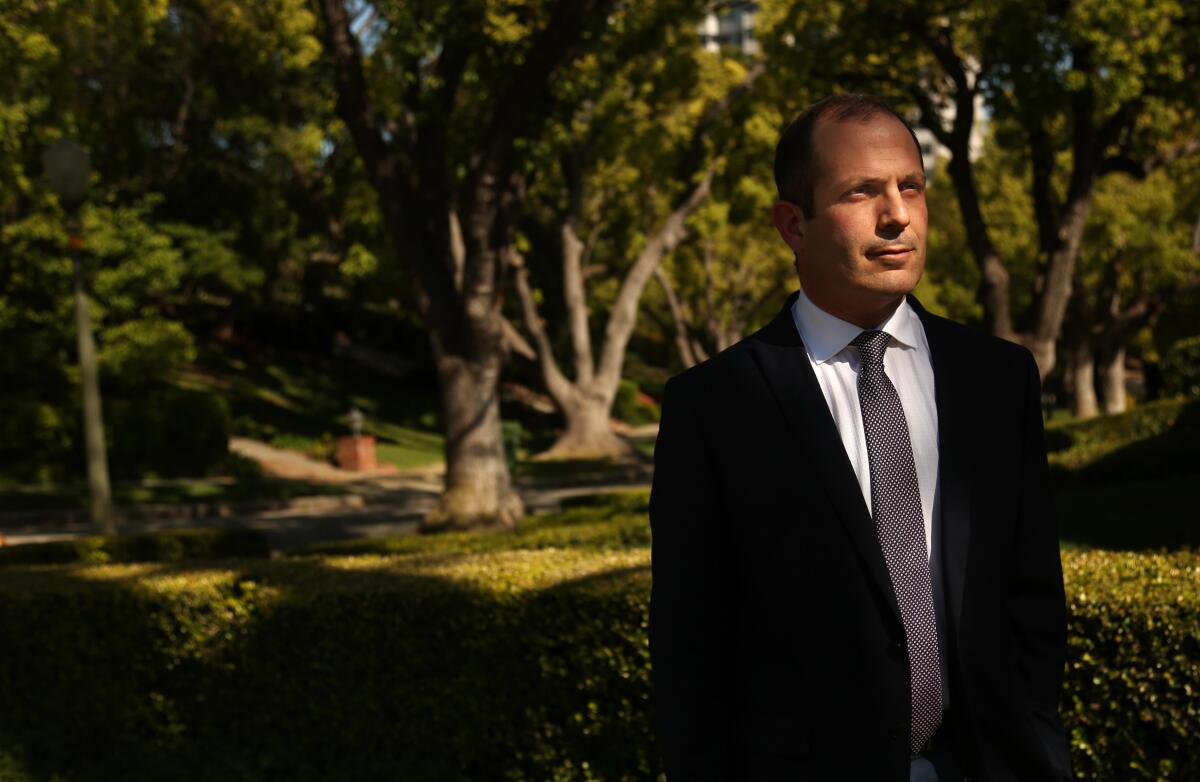
Dr. Nader Pouratian implanted matchbook-sized devices into the brains of four blind volunteers more than two years ago.
Since then, the participants in the neurosurgeon’s pioneering study have visited his UCLA lab each week to let him hone a system that could give them a rudimentary form of vision. Pouratian hoped to expand his experiment next year to include dozens of people around the country, and eventually make the treatment available to blind people everywhere.
Then the coronavirus came along.
Now seven years of work have ground to a sudden halt. Regular life will resume someday, but Pouratian’s project may not.
“Our first concern obviously has to be the well-being of the people we work with,” he said. “But as a scientist, it is hard to just stop cold like this.”
Hardly a facet of life remains untouched by the sweeping effort to slow the coronavirus’ spread. Researchers like Pouratian are facing more than lost income and social isolation.
The abrupt stoppage of a vast array of exploration and experimentation at universities and other research institutions has left scientists wondering about the discoveries that may never be made, the sick people who will miss the chance at a breakthrough cure and the careers that may never be launched.
What do scientists wish they knew about the coronavirus? Which treatments actually work, what antibodies are good for, and which public health measures help.
The longer the emergency measures remain in place, the more scientists stand to lose. Cell lines specially engineered for particular experiments get older every day. Distant stars cycle out of view of even the largest telescopes. Valuable information is lost before it can be collected.
When the orders came down to close their laboratories, scientists scrambled to mothball their experiments in ways that would maximize their chances of being revived. Those who need only a computer and an internet connection to run simulations or crunch complex numbers continued their work from home.
Now almost everyone is barred from their labs. Exceptions have been granted to the relatively few scientists who could show they’d lose irreplaceable work if their research couldn’t continue and those running clinical trials that provided critical care to patients. The rest have relied on skeletal staffs to tend to the animals, cells and expensive equipment that were suddenly abandoned.
People who were investigating the new coronavirus or possible treatments for COVID-19, the disease it causes, were exempt from the shutdown orders.
A hiatus of several weeks isn’t likely to result in irreparable harm, said Randy Katz, vice chancellor for research at UC Berkeley. If the restrictions stay in place for months, however, losses will become increasingly difficult to avoid.
For example, mice that have been bred to have a particular genetic condition or disease must begin an experiment at a particular age, giving scientists a narrow window for conducting their studies.
“Animals don’t live forever,” Katz said.
California’s stay-at-home order has complicated efforts by Berkeley scientists to measure the state’s snowpack at field stations in the Sierra Nevada, Katz said. State officials rely on that data to determine how much water will be available for drinking and for irrigating crops.
“We obviously need to go when there is snow,” Katz said. “If we wait too long, the opportunity is lost.”
UC Berkeley astronomer Alex Filippenko figured he was in the clear when he got special dispensation for a last look at several celestial objects, including a group of supernovas that could help scientists determine the current expansion rate of the universe.
He settled in at a remote observing room on campus that connected to one of the 10-meter telescopes at the W.M. Keck Observatory on Hawaii’s Mauna Kea. But on the first night of his observing run, he got the news: The telescope was shutting down.
Filippenko scrambled to reprioritize. He dropped plans to watch another type of supernova that could reveal more about how stars explode and the chemical elements they forge. By the time he’s able to look again, these stellar phenomena will have long since faded away, he said.
Caltech geobiologist Victoria Orphan had recently returned from a research cruise with a trove of deep-sea microbes when word came down that nonessential experiments would have to stop.
Orphan’s work with extremophiles — organisms that survive under extreme conditions like high pressure or a complete lack of sunlight — could shed light on the origins of life on Earth and the potential for life on other worlds, among other things. And because these microbes live in these extreme environments, they’re not easy to collect. Orphan didn’t want to lose them.
Handling the delicate microbes in the oxygen-free conditions they’re used to can be tricky, she said, so one of her grad students wrote out detailed instructions for a lab manager who is still going on campus to take care of the living things left behind.
Some of the high-pressure experiments she had in mind were moved to the back burner since they couldn’t be monitored from home, but if the microbes are still hardy when the stay-at-home order ends, she’ll give them a try then, she said.
And Saul Villeda, a neuroscientist and stem cell biologist at UC San Francisco, said his “head is still kind of spinning” after he was told last month that all nonessential work would be suspended within about 72 hours. “It was incredibly fast,” he said.
Villeda’s research on aging has turned up compounds in the blood of young mice that may help reverse cognitive decline in older animals. When the shutdown order came, he gathered his team on a videoconference to make quick decisions no scientist ever wants to consider: What tissues could they harvest? Which ones could be preserved, and which would have to be discarded?
“It was just this overwhelming feeling because you’re not sure how you’re going to make it work,” said Villeda, who managed to freeze his most precious samples. “And then, of course, you make it work.”
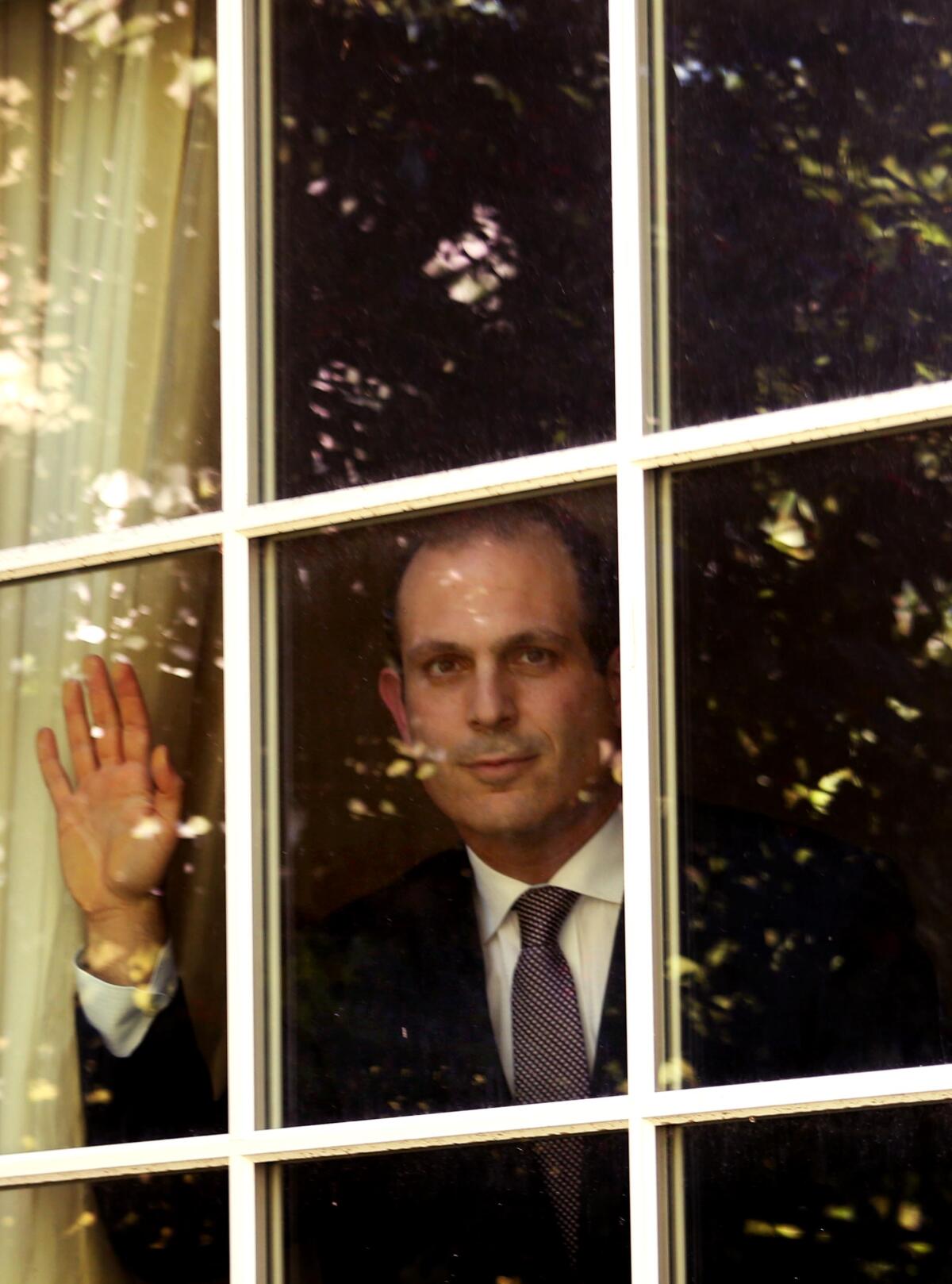
Researchers running trials on experimental medical treatments have been granted reprieves if participants in their studies are dependent on the treatments. Pouratian’s work at UCLA did not meet this high bar, so it had to shut down.
The system to create a type of artificial vision, which he helped a medical technology company develop, requires subjects to wear special glasses with small embedded video cameras that connect wirelessly to the brain implants. The implants then translate the video footage into patterns of stimulation that the brain interprets as flashes of light, allowing the person to discern motion such as whether someone is approaching them or walking away. Much work remains to fully understand how a brain’s visual cortex and the device interact.
After being designated a “breakthrough device” by the Food and Drug Administration, the invention had been on an expedited track toward regulatory approval for widespread use. But now everything is on hold, and the company that produced the device is shutting down, an economic casualty of the pandemic.
There is confusion about other sources of funding as well. Government agencies and private groups dole out billions of dollars in grant money each year — but it usually has to be spent during a limited period of time and requires researchers to finish projects on a strict schedule.
Matthew Fenton, director of the extramural activities division for the National Institute of Allergy and Infectious Diseases, said his agency has been fielding urgent questions from anxious researchers who fear their end-of-year reports won’t show enough progress.
“We assure them that that is not the case at all,” Fenton said. “We’re there to support them as much as we can to get through this.”
In a bipartisan push, more than 180 members of Congress this week called for $26billion in coronavirus relief funding to be set aside for scientists and medical researchers affected by the pandemic.
“These researchers are essential to protecting our nation’s public health, national security, economic growth and international competitiveness,” the lawmakers wrote to House Speaker Nancy Pelosi (D-San Francisco) and Minority Leader Kevin McCarthy (R-Bakersfield).
Israeli scientists say they can mimic the effects of a vaccination campaign if certain people willingly get infected with the coronavirus and recover.
Perhaps the most vulnerable researchers are those just starting out in their careers who don’t have a track record of success to fall back on. For newly minted doctorates, advancing up the scientific ranks is a challenge in normal times. Now many fear it will be all but impossible as their laboratory work — and the coveted academic publications that should follow — enters a sort of purgatory it may never escape.
Karla Satchell, a microbiologist studying cholera and cancers at Northwestern University Feinberg School of Medicine, said she was particularly concerned for three of the graduate students working in her lab. One of them was set to get his doctorate this summer but can’t complete experiments he needs for his thesis.
“It’s really tough on these trainees,” Satchell said. “You sort of get a momentum in graduate school and you keep that momentum going.”
But many scientists whose work is primarily computer-based have been able to continue analyzing their data and running simulations as they shelter at home, albeit with more distractions than usual.
That’s little consolation for people like Pouratian, who sees a promising breakthrough possibly slipping away.
His thoughts keep returning to the four volunteers who agreed to have brain surgery for the sake of his experiment.
“They did it not only for themselves, but because it might help others down the road,” he said. “And, now, they’re just sitting at home.”
